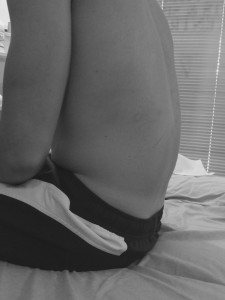Why are ‘hamstring problems’ so common? They are a huge burden in the sports industry, but can also afflict the rest of us – both the ‘weekend warrior’ and ‘couch potato’ alike.
Various ‘diagnoses’ are attributed to an array of symptoms in the hamstrings:
- ‘Tight hamstrings’ have been an age old problem for many – often becoming apparent in the teenage years – or later in life. Regular stretching can ensue
- ‘Sciatic pain’ – may be overt or covert. It usually occurs in the buttocks and particularly the hamstrings – but may/not travel into the lower leg
- Hamstring ‘tears’ and ‘sprains’ are one of the most common injuries in the sports industry, particularly for elite athletes – but also for the less ‘fit’. Despite a lot of research on the subject, injury rates have not significantly decreased
- Hamstring ‘tendinopathies’ and ‘over-use syndromes’ are becoming a lot more prevalent. These can be notoriously difficult to treat in the short and long-term
Significantly, the aetiology of ‘hamstring problems’ still remains somewhat elusive. Sports Medicine Australia has produced a ‘Hamstring strain’ fact-sheet :
Proven risk factors include:
- Previous hamstring injury
- Increasing age of player
- Sudden change in direction (acceleration or deceleration).
Suspected risk factors:
- Poor flexibility
- Poor strength
- Hamstring muscle fatigue
- Muscle strength imbalance between the quadriceps and hamstrings.
Note that these ‘risk factors’ really tell us little about the functionally relevant movement abilities of the person.
Local treatment in the acute stage is recommended which makes sense. However, the advice proffered on prevention and rehabilitation is of a very general nature – and I think helps point to real nexus of the problem: – that the ‘hamstring problems’ are seen as an isolated event – hence it is difficult to be specific about advice on prevention and rehabilitation beyond dealing with the acute soft tissue problem.
Conversely, whatever the ‘diagnosis’, we can consider looking ‘outside the square’ for disturbed function elsewhere in the kinetic movement chain as a possible cause of the local ‘hamstring problem’. Clinical mapping of common patterns of altered movement response can explain a diverse array of symptoms.
While a ‘tear’ is a tear -– some things are common to all the ‘diagnoses’ listed above – like discomfort/ pain, local tenderness and ‘tightness’. The muscle may test ‘weak’ and/or fatigue early. And I’d like to also suggest increased resting muscle tone isa common finding when looked for. All these features are indicative of neural irritation – albeit to a varying degree and ‘stage of disorder.’
So where does this come from?
While fascial bind in the posterior myo-fascial system can cause direct neural irritation, the most likely cause is segmental irritation from the lumbar spine – which in itself will ‘fire-up’ these posterior-inferior tissues – a vicious cycle.
In my book “Back Pain: A movement problem” I suggested a causal sequence of events to explain this cycle in more detail (p.290).
Once you can conceive of the source of the problem being in the spine, it starts to open up more possibilities for prevention and specific rehabilitation of ‘hamstring problems’– and better outcomes in a shorter period of time.
Specific risk factors implicating the spine in ‘hamstring problems’ are clinically observable in a simple test sequence:
-

Fig 2 
Fig 1 Observe the habitual sitting posture – it will invariably be slumped (Fig 1)
- An inability to bring the lumbo-pelvic spine into ‘neutral’ in sitting – and without excess superficial thoracolumbar myo-fascial activity (Fig 2).
- When control of the pelvic force couples is lost, the lumbar spine cannot be controlled in its ‘neutral’ lordosis. Instead segmental end range flexion loading ensues. When this is repeated enough sets up neural irritation – increased muscle tension and local and referred ‘pain’ &/or symptoms in the tissues supplied by that nerve root – in the case of the hamstrings, L4/5/S1/2.
-

Fig 4 
Fig 3 It is important that the inner “Lower Pelvic Unit’ is active in FPP1 as this provides stability for the pelvis when attempting
to extend the knee in sitting. (Fig 3) This is an important functional pattern, particularly for the ‘kicking’ sports person. Otherwise every time he kicks his leg his lumbar spine flexes – further feeding into the neural irritation cycle. Everyday activities of bending and squatting also involve this pattern
- Many sports people ‘workout’ on machines in sitting to develop strength in the quadriceps and hamstrings – yet if they cannot stabilise the spine in neutral while doing this, the stage is set for further spinal ‘segmental bother (Fig 4)
-

Fig 5 
Fig 6 
Fig 7 Further, most of the hamstring stretches people do for are poorly localised and stretch the spine more than the leg – creating further segmental bother and perpetuating the problem (Figs 5, 6 & 7)
For more information – Do stretching and strengthening exercises perpetuate our clients problem
-

Fig 8 In addition, many of the current approaches to improving fitness and ‘strength’ should be scrutinised for their possible contribution to injuries – and ability to actually improve that person’s function.Squats come readily to mind. Without adequate control of FPP1 these can create a lot of lumbosacral bother (fig 8)
For more information: “Strengthening the glutes: helpful or harmful”
- As we know, many hamstring ‘tears’ happen during the eccentric lengthening phase of knee extension. A ‘supercharged’ muscle does not readily eccentrically lengthen well – or fast enough – whether he is kicking, running or changing direction quickly – and viola, a ‘tear’ ensues
So….‘Hamstring problems’ are likely to continue to be the bête noire of the sporting and fitness industries unless the functional disabilities of the subject are specifically and adequately redressed in therapeutic and fitness programmes.